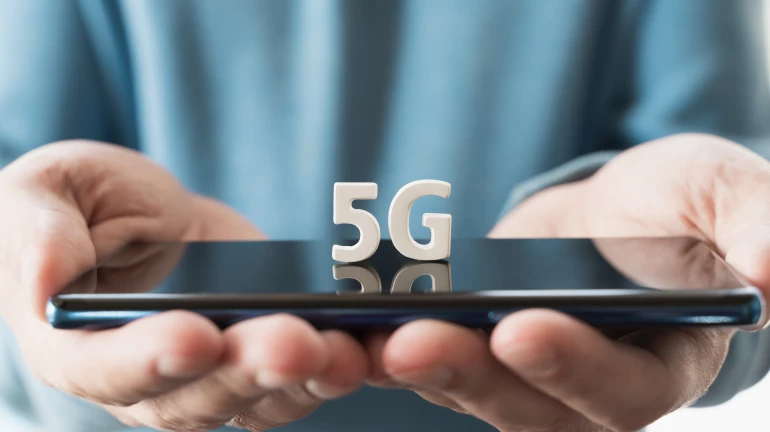
There is no doubt that India is probably the world’s most fertile market for 5G adaptation. But, what could be the real challenges that India needs to decipher before the dream of 5G becomes a reality. In the past two-decade India has seen significant investment in the communication network space that has paved the way to the current digital transformation. It was telecom networks and technology services that kept people connected during the pandemic and global economies up and running despite widespread lockdown. While 2020 will be remembered as the most disruptive year in living memory, at the same time let’s understand what are key challenges 2021 behold for the 5G rollout in India.
The onset of the pandemic has accelerated the digital adoption of various products and services and in a broader sense has been a boon for the digitalization of the country. Concurrently, the pandemic has also taught us the lesson that India is far behind and need to leapfrog and embrace emerging technologies & infrastructure despite its readiness to accept change. Internet and Mobile Association of India (IAMAI) & CISCO states that the internet will penetrate 829 million Indians in 2021 which was nearly around 50 per cent in 2020, from just about four per cent in 2007. Thus, it’s a perfect time for the government to either get global players to invest in India and to build indigenous 5G solutions. Though such investments are crucial; But, investments in semiconductors and future technology need a lot of impetus.
Affordability of Spectrum
The rest of the world may already roll out 5G connectivity to its users but, in India, the 5G spectrum is yet to be allocated. The country’s 5G ecosystem is underdeveloped and has yet to be matured. The cost of the spectrum is exorbitant and inappropriate for telecom companies, that is why India’s debt-ridden operators are still reeling under the pressure to keep existing 4G networks costs low. While the current levels of pricing are unsustainable; But, the future is promising eventually market has to correct itself, it will be powered by an indigenous-developed network, hardware, and technology components that will be a testimony to Atma-nirbhar Bharat.
Last-mile Connectivity
Catering to last-mile broadband connectivity in tier II, Tier III cities, and rural homes are challenging Since India lacks optical fiber infrastructure and greenfield deployment which has immensely affected Last-mile connectivity. Although, projects like “National Optical Fiber Network” (NOFN) which was initiated in 2011 under the “Universal Service Obligation Fund” to improve the last mile connectivity in all the 2, 50,000 Gram panchayats made their mark to improve connectivity in rural and suburban parts of India. But as we look forward to taking a leap in the year 2021, 5G sought up-gradation in the network infrastructure and deployment of more sustainable greenfield projects like (NOFN) that will adhere to last-mile connectivity for whom 5G is still a dream.
Affordable 5G Devices
On the consumer front, even if 5G network connectivity comes in, affordable 5G devices are yet to take their place in the market. And also, mitigating existing 4G and 3G users to 5G networks and devices will pose a great challenge in front of industry veterans. The biggest roadblock in the India 5G electronics manufacturing industry is that it lacks the world-class ‘semiconductor fabricating unit’ (FAB) which is the notable denominator for device affordability. Hence, It's the perfect time for the government to either invite global players to invest in semi-conductor fabricating plants in India or start the work to build an indigenous version of it.
Lack of Regulatory bodies in India’s Telecom sector
From the past two decades, the telecom sector has missed a good chance in formulating a uniform broadband strategy for the advancement of broadband and 5G adaptability in India. Network operators, solution providers, and policymakers find it hard to find the common ground which is greatly affected by the procedural delays and their multiple regulatory issues. Companies who faced loss in 2G spectrum scam have clearly left a lesson for other telecom companies to pull out their investment in India for any future projects. 5G implementation in India will not become a reality until there is a proper regulatory body that will develop the roadmap for 5G in India.
Network Security and privacy
Even in the early 80’s era, 1G networks saw wireless channels for illegal cloning and masquerading. As networks and applications evolve further, Threats such as semantic information (information which is in some sense meaningful for the user’s system) attacks often target the location data of users. Location data can also be leaked by access point selection algorithms in 5G mobile networks. On the other hand, data collection is another major concern for 5G users, practically all mobile applications demand user’s personal information during or before installation. Application developers rarely denote how and where they store that data and what they will use it for. Ever since cloud-based data storage has no physical boundaries, it is prevalent that the 5G operator cannot safeguard user data in the cloud environment.
In the end, I believe the potential benefits of 5G is magnificent. But the challenges such as Network security and privacy, reasonable 5G devices, affordable spectrum, and infrastructure gaps confronting the Indian telecom sector are also massive.
The above article is contributed by Amit Singh, CEO, Teliolabs. The views expressed in this article are his own and Mumbai Live may not agree to all the points stated in this article.





